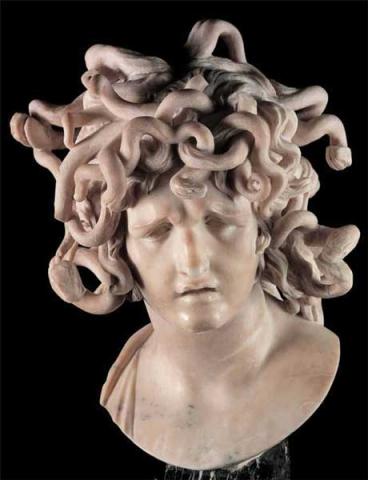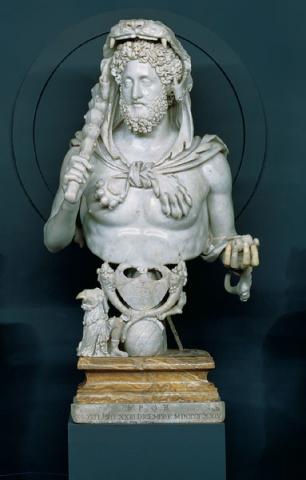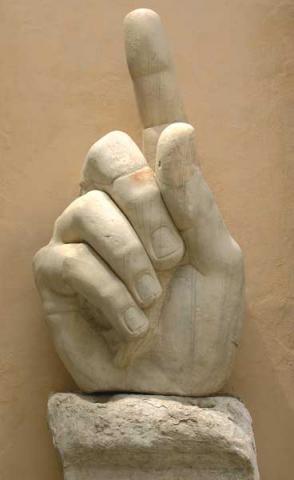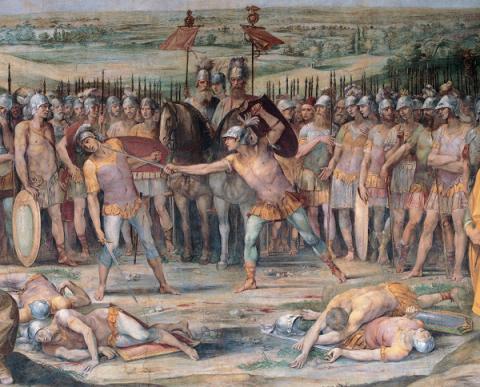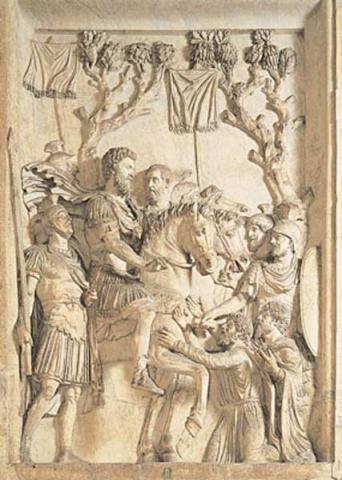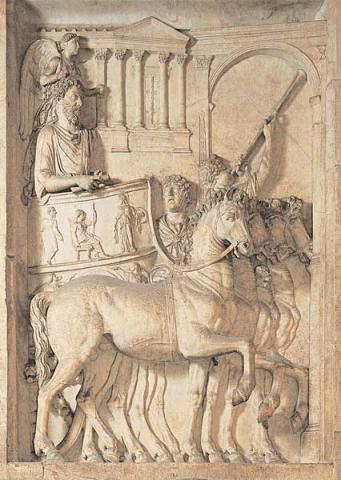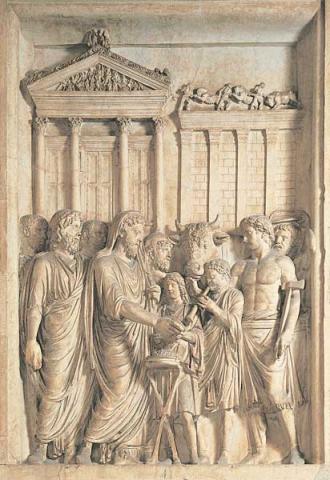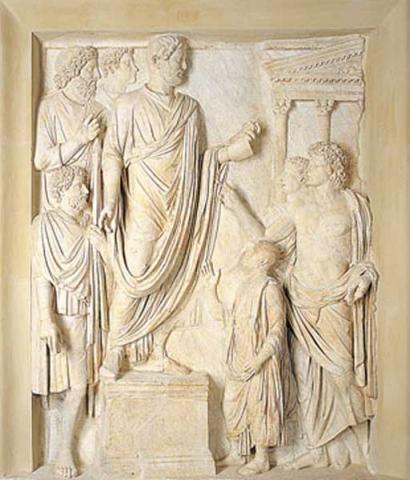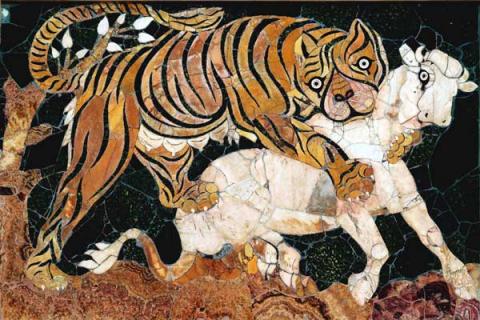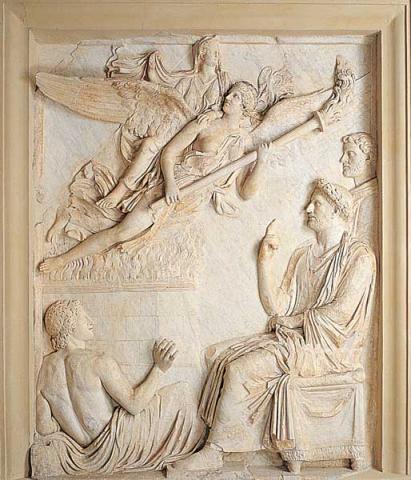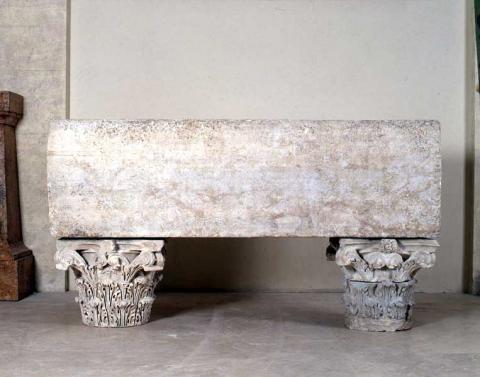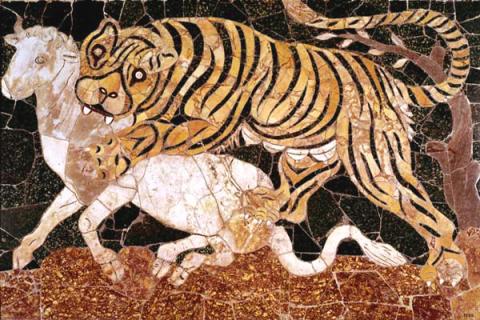Main Staircase
The landings on the main staircase that leads to the upper floors feature large historical reliefs which originally were used to decorate public monuments.
Three panels from a triumphal arch refer to the exploits of Marcus Aurelius and are lined up on the first landing, while another three portraying the Emperor Hadrian are distributed one on each landing.
On the top floor, on either side of the entrance to the Picture Gallery, two splendid panels inlaid with coloured marble from the Basilica Iunii Bassi on the Esquiline face each other.
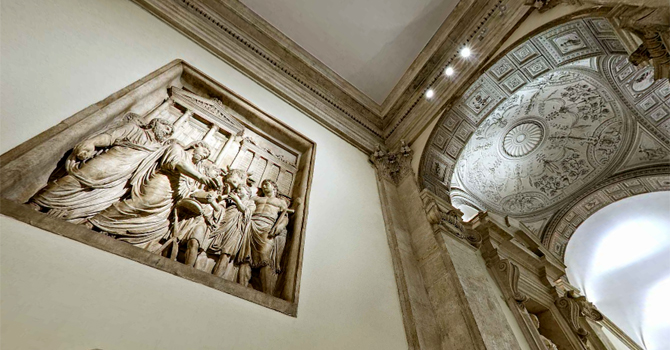
The main staircase was built Around the year 1570, while working on the new facade of the Palazzo, replacing the fifteenth-century outside staircase: the two big ramps overlooked a small open courtyard which was closed in the early twentieth century. The third flight of stairs was built in early 1900s to facilitate access to the gallery, and it was expanded in those years with the creation of the Cini Gallery.
I Shelf
Between 1572 and 1573, four great Roman historical reliefs, from monuments in honour of Hadrian (117-138 AD) and Marcus Aurelius (161-180 AD), were placed on the walls. The historical and artistic importance of these reliefs is very great, they are the typical expression of ancient Roman art, in which in the main events of the wars or the celebration of religious ceremonies are depicted.
Starting from the left, are: Hadrian’s Adventus: the relief, that comes from Piazza Sciarra, is the preserved part of an honorary arch located near the temple to the deified Emperor: it depicts Hadrian entering Rome (probably returning from the Roman-Jewish war in 134 AD), through a door in the wall, welcomed by the goddess Roma and the personifications of the Senate and Roman people. The other three historic reliefs are probably from a triumphal arch dedicated to Marcus Aurelius on the occasion of his victories over the Sarmatians and the Germans in 176 AD; in the Capitoline since 1515, the reliefs come from the Church of Saints Luke and Martina in the Roman Forum:
Imperial clemency: Marcus Aurelius is portrayed in an attitude very similar to the one of the equestrian statue at the centre of the square: on horseback, wearing military uniform, with his right arm outstretched, a gesture of clemency towards kneeling barbarian prisoners.
Imperial victory: Marcus Aurelius celebrates triumph over the defeated enemy. On a chariot drawn by four horses, Marcus Aurelius enters Rome accompanied by a winged Victory.
Imperial religiosity: Marcus Aurelius, in civilian clothes and with his head veiled, offers a sacrifice at the temple of Jupiter Capitolinus , where all the triumphal processions ended.
II Shelf
The construction of the monumental staircase is enhanced by charming stuccoes decorating the vaults, drawn by Luzio Luzi in 1575, depicting the glorification of Roman virtues and monuments of civilization. Other stuccoes feature scenes from the Old and New Testament.
A great historical relief has been placed next to the door that gives way to the hall of the Horatii and Curiatii; it comes from the “ Arch of Portugal” on Via del Corso, demolished in 1662. Two reliefs from an arch dedicated to Hadrian were inserted in this monument, of the late ancient period, probably built in the vicinity of the temple deified emperor, in the Campus Martius. The relief depicts Hadrian on a podium, while presiding at a ceremony where food is given to Roman children.
III shelf
On the left is a great historical relief from the Arch of Portugal: it depicts the apotheosis of the Empress Sabina, who was the wife of Hadrian and deified after her death. The emperor, seated on a throne, with the personification of the Campus Martius, is present at the apotheosis of Sabina who emerges from a funeral pyre on the shoulders of a winged female figure, identified as the personification of Eternity.
On the same shelf there are two coloured marble inlay panels, representing tigers assaulting a calf. These are two of the few remaining elements of the rich marble decoration of the so-called Basilica of Junius Bassus on the Esquiline Hill. The walls of the great hall, built by Junius Bassus in 317 AD during his consulate, were covered with beautiful polychrome marble inlays.


























